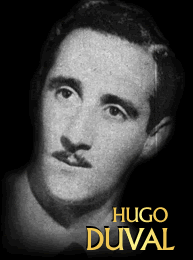Music: José Ranieri
Lyrics: José Rótulo
Orchestra: Osvaldo Fresedo
Singer: Héctor Pacheco
This performance: Buenos Aires, January 6, 1955, Odeón Disco Nacional, Record No. 51887-B
Curated and Translated by Luigi Seta
Tango Talks! (El tango nos habla)
Qué hacer cuando hemos vivido en vida algo tan hermoso como un sueño, pero tan fugaz que ya con el tiempo transcurrido no sabemos si ha sido parte de nuestra realidad, o simplemente eso… un sueño. El Tango nos ayuda a evocar y a reflexionar sobre lo que ya no será jamás. Escuchemos.
Acerca del Cantante / About the Singer
Héctor Pacheco
Fue dueño de un estilo elegante, distinguido, intimista. Escucharlo cantar significa imaginar lujosos locales nocturnos, grandes salones, salas de baile frecuentadas por las clases altas, hoteles de muchas estrellas donde los violines, el piano y los bandoneones acompañan a un cantor que recrea con su voz un mundo que ya no existe pero que siempre es agradable evocar. “En un mundo de alegría entre humo y copas de champagne” como dice en “Sollozos”, el poema escrito en 1922 por Emilio Fresedo.
He owned an elegant, distinguished, intimate style. To hear him sing means to imagine luxurious nightclubs, large halls, dance halls frequented by the upper classes, many stars hotels where violins, piano and bandoneones accompany a singer who recreates with his voice a world that no longer exists but which it is always pleasant to evoke. "In a world of joy between smoke and glasses of champagne" as it says in "Sollozos", the poem written in 1922 by Emilio Fresedo.
Su época de oro fueron los cinco años con Osvaldo Fresedo (1952-1957) y los dos o tres años con la orquesta de Carlos García. Diez años le alcanzaron y le sobraron para merecer el título de “Príncipe de Buenos Aires”. Los años anteriores y posteriores fueron la antesala o el epílogo de sus tiempos de brillo y esplendor.
His golden age was the five year tenure with Osvaldo Fresedo (1952-1957) and two or three years with the orchestra of Carlos Garcia. Ten years were enough to deserve the title of "Prince of Buenos Aires". The years before and after were the anteroom or the epilogue of his times of brilliance and splendor.
“Vida Mía”, un poema escrito por Emilio Fresado en 1933, fue su tema clásico, el que solicitaban sus incondicionales que nunca sumaron multitudes pero que siempre fueron leales a su Príncipe. Se dice que su caudal vocal era modesto, pero que se las ingeniaba con otros recursos para suplantar los límites físicos. Puede ser. Lo que está fuera de discusión es que ese estilo “romántico”, delicado, algo abolerado, como decían sus críticos más severos, supo representar una época, a una clase social que reconocía en el ritmo de Fresedo y la voz de Pacheco una marca propia.
"Vida Mía", a poem written by Emilio Millado in 1933, was his classic theme, which his unconditional ones requested that never were huge crowds but always loyal to his Prince. It is said that his vocal flow was modest, but that he managed with other resources to overcome the physical limits. It can be. What is out of the question is that this "romantic" style, delicate, somewhat bolero style, as his harshest critics said, represented a time, a social class that recognized in the rhythm of Fresedo and the voice of Pacheco an own brand.
Pacheco siempre mantuvo aquella presencia distinguida que lo caracterizó. Aquella que hizo famosa en la orquesta de Osvaldo Fresedo. Donde no siendo el mejor vocalista logró el reconocimiento, por la refinada amalgama de su personalidad con la prestancia del Maestro, en la lujosa boite Rendez Vous (en francés: nuestra cita, ubicado en la calle Maipú entre Paraguay y la avenida Córdoba).
Pacheco always maintained the distinguished presence that characterized him. The one that made him famous in the orchestra of Osvaldo Fresedo. Where not being the best vocalist achieved recognition, by the refined amalgam of his personality with the Maestro's excellence, especially in the luxurious boite Rendez Vous (in French: our date, located in the Maipú Street, between Paraguay Street and Córdoba Avenue).
Muñequita De París
Castellano:
Muñeca de París,
varita de cristal, tu paso fue fugaz, fue breve, fue mortal, tan breve como el cuento que una vez oí decir, de aquella princesita de marfil... París... en el embrujo de tu luz, La vi... pasar radiante la ilusión, fue... la princesita de marfil, que cautivara mi niñez, aquellos cuentos de París, después... la noche con su carrousel de luz... fue su delirio y fue su cruz, yo... en la ceguera de mi amor, la vi... quemarse en tu esplendor, París... |
English:
Doll of Paris,
crystal wand,
your presence was fleeting,
was brief, was mortal,
as brief as the story
which I once heard,
of that little ivory princess ...
Paris...
in the spell of its light,
I saw her...
radiating, the illusion passing by,
It was...
the ivory princess,
that captivated my childhood,
those tales of Paris,
after...
the night with its carrousel
of light...
it was her delirium and was her cross,
I...
in the blindness of my love,
I saw her...
burnt in the splendor,
of Paris...
|
Nota: la letra fue tomada directamente de la grabación.
Note: the lyrics were taken directly from the performance.
Y ahora este tango en una Tanda / A now this song in a Tanda
Tal vez la mejor de la Última Tanda, cuando la llegada del día nos marque el fin de la milonga. Perhaps the best of the Last Tanda, when the arrival of the day marks the end of the milonga.







